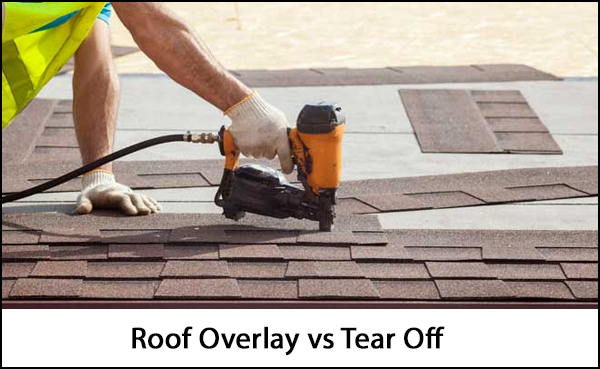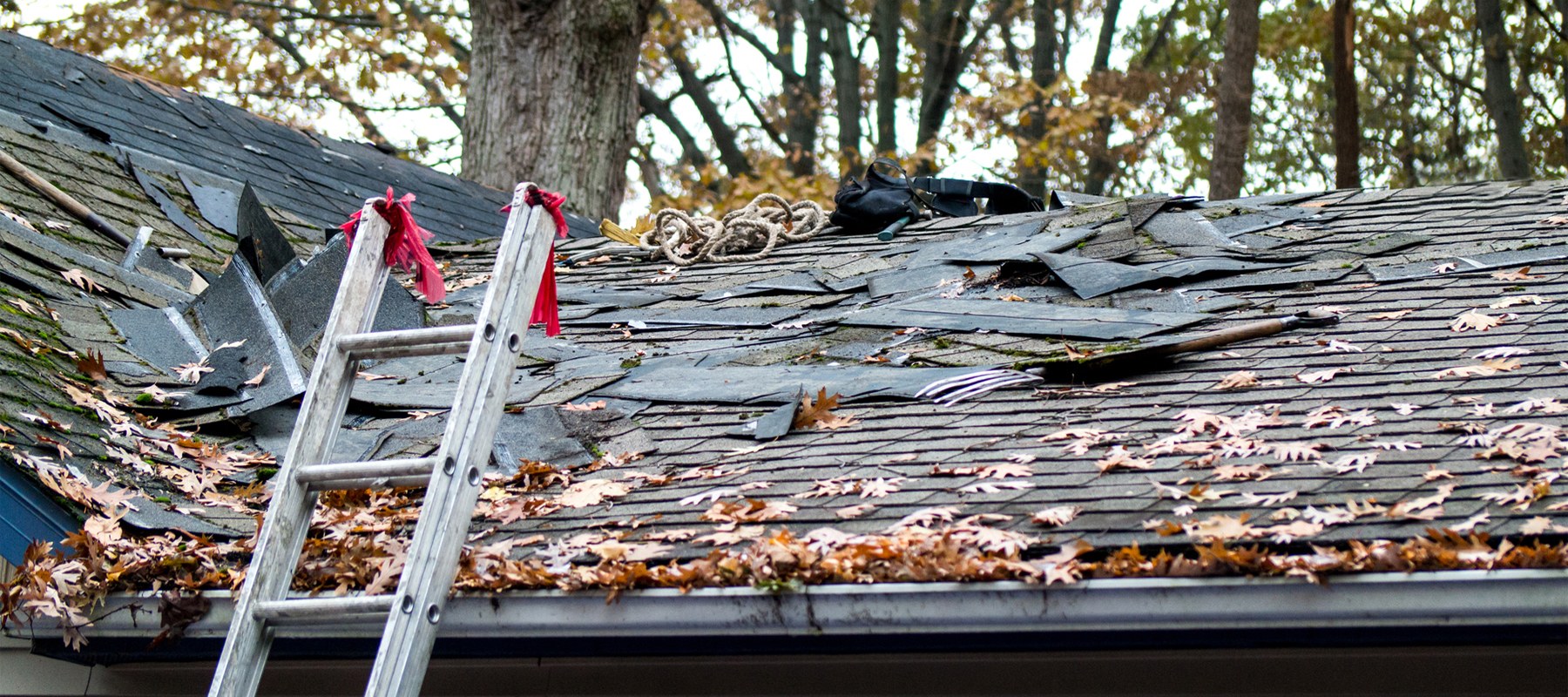Pros vs Cons of Roofing Over Existing Shingles
Last Updated: June 08, 2022

Fact Checked By: Ryan Maguire
On This Page
When it comes time to replace your roof, you may be faced with a decision: should you fully replace the roof, or simply overlay new shingles on the existing one (also known as a recover)? There are advantages and disadvantages to both, so it is best to be aware of what comes with both options before making your final decision.

Pros & Cons of Removing the Existing Roof (Tear-Off) #
Removing your existing roof is typically what people think of as the best option, but it does have its own set of pros and cons.
Pros
- Adds value: When you put in a brand new roof, your home's resale value and curb appeal increase. If you are looking to sell your home, this is a major benefit.
- Full replacement: This probably seems like a no-brainer, but fully replacing your roof means you get a brand new one, which means any underlying issues or problems are fixed. Insulation issues, leaks, and rotting can all be observed and fixed, leaving you with a healthier and more complete roof.
- Longevity: A full roof replacement will always last longer than an overlay. A new roof fixes existing issues and traps less heat than multiple layers, which can cause shingles to break and curl faster.
- Quality: Since the roofer is able to identify and repair high-risk areas, a new roof offers better quality than an old one. With new flashings installed, insulation problems fixed, and proper sealing completed, your home remains watertight and retains your costly treated air.
Cons
- Cost: Fully replacing your old roof comes at a higher cost than an overlay. There is more labor involved in a tear-off job, as the old roof must be completely removed and any problem areas repaired. A complete replacements costs thousands of dollars.
Pros & Con of Overlaying the Existing Roof #
Overlaying your existing roof also comes with its own set of pros and cons. Whether it is the right choice for you depends on your home and the condition of your roof.
Pros
- Affordable: Rather than ripping off your old roof and putting a new one down, you simply add a layer of shingles to your existing roof. This involves less labor, dropping your costs considerably.
- Less time-consuming: Because there is less labor involved, an overlay job takes far less time than a tear-off job. This is ideal if you need a new roof as soon as possible, or if your budget cannot quite support the additional cost of lodging during installation.
Cons
- Additional weight: Since you are effectively adding another roof to your home, you are adding a considerable amount of weight to your house. This can cause structural problems and it is possible that your home may not be able to support the extra weight.
- Appearance: With an overlay job, the installer isn't fixing the original, so any aesthetic problems the roof had will still be there. And adding an additional layer definitely affects the appearance of your roof and most likely won't look as good as a new one.
- Deck checking: Tearing off an old roof gives you a chance to see what's underneath and fix any issues, but you don't have that ability with an overlay. Unless an initial inspection is performed or the contractor notices something during the overlay, problems can grow without you even realizing.
- Leaks: When you have multiple layers on a roof, it is more difficult to find where a leak is coming from. Water travels between the layers, often coming through another spot, meaning patch jobs and even identifying the source of the leak is difficult at best.
- Less longevity: Shingles laid over an existing roof do not last as long as their typical lifespan. The additional layers trap extra heat, which causes damage to the roof. While an overlay is a quick and simple fix, the roof will still need to be replaced at some point.
Roof Overlay vs Tear Off Cost #
- The cost of a full roof replacement ranges between $4,000 and $15,000
- The average cost of a new roof ranges between $6,500 and $8,700.
- The national average cost for a new roof is around $7,500.
- Be sure to figure out if you need a full replacement, or if you simply need repairs, which come at a more affordable average cost around $750.
An overlay costs significantly less than a tear-off job, costing closer to the repair price range than the replacement price range. But be sure that your roof is not in need of a full replacement before making any final choices. Remember that initial cost isn't everything; if there are significant issues with your roof and you opt for an overlay, you may wind up spending far more than if you had simply installed a new one.
Providing an exact cost for a new roof is difficult, as prices are largely determined by the size and pitch of the roof, the materials you choose, the seller you purchase from, and the complexity of the installation.
When to Remove the Old Roof #
Though it is sometimes difficult to tell when removing the old roof for a new one is the better decision, there are some warning signs that clue you in. If you already have two layers of shingles, then it is time to get a new roof. If you weren't the one to do the overlay, who knows how long the bottom layer has been there? Plus, most building codes only allow for two layers of roofing.
Does your roof leak when it rains? It's time for a new one. While you can still do an overlay in this situation, the leaks do not get fixed and it becomes harder to identify where they come from. You should also replace the roof entirely if your shingles are curling. An overlay should lay flat, which can't happen with curled shingles, so it is best to replace.
Resources
